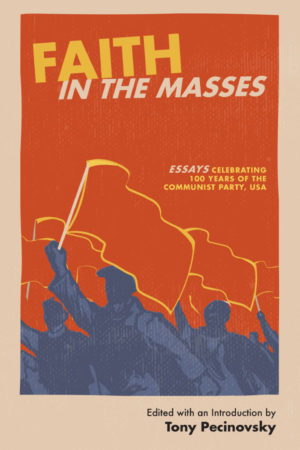Description
Let Them Tremble: Biographical Interventions Marking 100 Years of the Communist Party, USA is a collection of six biographies exploring unique and often neglected aspects of the Communist Party, USA (CPUSA). Each biographical intervention explores a specific CPUSA leader’s life, work, and times and places them within political and historical context. The goal of these interventions is not to tell a complete story, to paint a complete picture; intimate knowledge of personal lives and relationships is not the goal and is largely absent. Rather, the goal is for each biography to tell a partial political story, a story that emphasizes topical aspects of the Party’s ongoing work, especially in the post-1956 period.
The interventions collectively span the bulk of the Party’s history, not just the so-called Heyday, Popular Front, McCarthy or Old Left periods. Special emphasis is placed on Party activity and analysis in the 1960’s, 1970’s and 1980’s, up to the Party’s centennial. The biographical interventions constituting this project are a sincere attempt to add some nuance and complexity, to explore a neglected period of communist activity in U.S. history, and thereby add knowledge, breadth and depth to the study of U.S. radicalism in the 20th century.





People’s World –
People’s World: Even for those readers who might be relatively up to speed on their radical U.S. history, some of the personalities you cover in the book are certainly among the less-well-known. How challenging was it to be the first to take up the task of detailing their lives?
Tony Pecinovsky: It was very much a challenge, albeit a fun and rewarding one. It led me down so many wonderful historical corridors and pathways. The personalities explored in “Let Them Tremble” are so inspiring, so full of humanity. It was a real honor to read through the personal letters, correspondence, and notes housed at NYU’s Tamiment Library. The CPUSA documents housed there are really a treasure. Hopefully, a new generation of historians will look with fresh eyes at the collection donated by the CPUSA about a decade ago and begin to rewrite the history from a more sympathetic perspective.
Of special note to me were the personal letters between Arnold Johnson and his wife during the height of the Red Scare. They had every reason to be despondent, to be fearful. However, in letter after letter, optimism shines through, a hope that the prevailing winds of Red Scare would soon shift back toward democracy. Mind you, these were personal letters. They weren’t meant for public consumption. They were soft, caring moments shared between partners during the darkest days of McCarthyism. Yet, despite the repression—the FBI surveillance, harassment, and intimidation, the jailing of their friends and comrades—they were optimistic. Johnson believed so strongly in the Bill of Rights, in democracy. And that faith shines through in every document, in every letter.